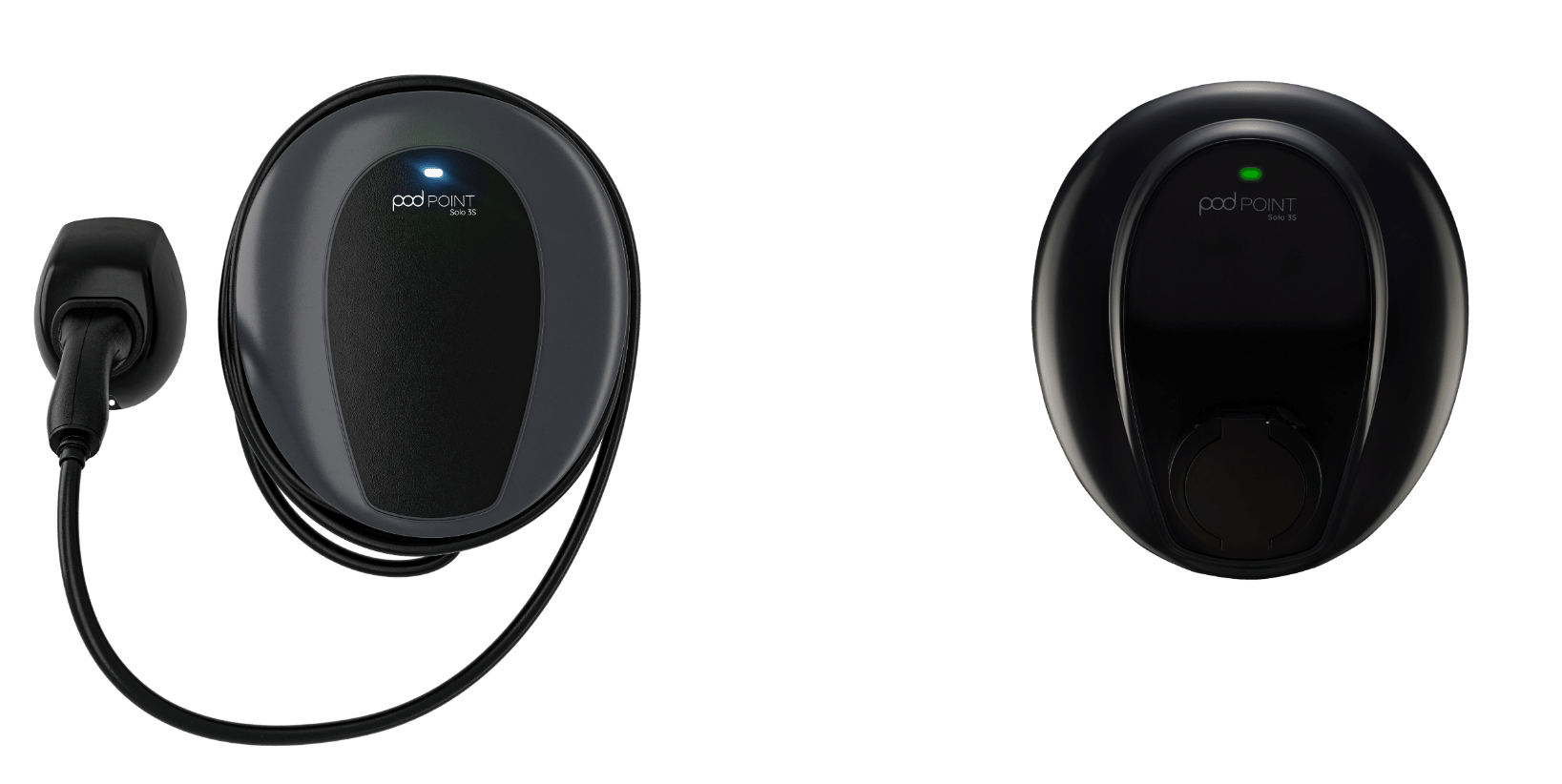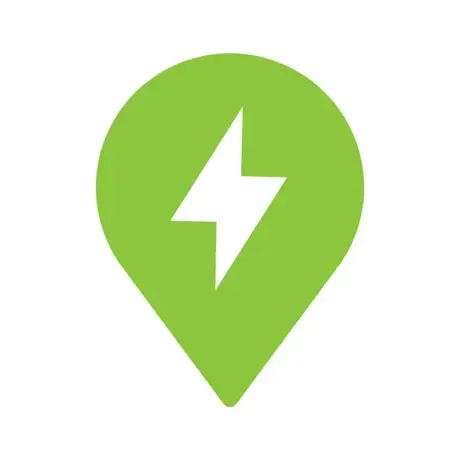Electric Car Charger Home Installation: Ultimate UK Guide
At Zero Wasted, our mission is to help you make informed, conscious choices—we do the research so you don’t have to. Affiliate Disclosure: Some articles may contain affiliate links, meaning we may earn a small commission if you make a purchase through them. This comes at no extra cost to you, and we only recommend products we truly believe in.
Whether you’ve just made the switch to an electric vehicle or are looking to upgrade your home setup, this guide covers everything you need to know about installing an EV charger at home.
From understanding charger types and installation costs to choosing the right features and making the most of smart charging, we’ll help you take the guesswork out of powering up your EV.
With the UK’s move towards net-zero emissions by 2050 and more people adopting electric vehicles, there’s never been a better time to get set up with a reliable, cost-effective home charging solution. Let’s break down the essentials — and help you find the setup that works best for your home, lifestyle, and budget.
To help you get set up, this guide includes helpful links and a recommendation for Pod — a leading, award-winning UK brand we genuinely rate and trust.
1. Understanding EV Chargers: Ports, Plugs & Power
Not all EV chargers are created equal — and knowing the difference between charger types, ports, and cables will help you choose the right setup for your home and vehicle.
What’s an Electric Vehicle Charge Point?
An EV charge point is simply the socket where you plug in to charge your electric car. A charging station is the broader setup that may include one or more charge points — something you’re more likely to see at public car parks or service stations. At home, a single charge point is all you need.
AC vs DC Charging
- AC charging is what you’ll use at home. It works with your vehicle’s onboard converter to power up your battery — it’s slower but perfect for overnight charging.
- DC charging is found at public rapid-charge stations. It skips the onboard converter and pumps power straight into the battery for a much faster top-up.
EV Charger Ports Explained
The type of connector matters — here’s what you need to know:
- Type 1: An older, single-phase plug seen in some early EVs.
- Type 2: The UK and European standard. Faster, more efficient, and used by nearly all new EVs.
Tethered vs Untethered Chargers
Should you go for a charger with a fixed cable or one where you plug in your own?
- Tethered: Comes with the cable permanently attached. Super convenient — just plug in and go. Choose tethered if ease is your priority.
- Untethered (universal): You use your own cable. A bit neater on the wall and great if you’ve already got a compatible lead. Choose untethered if you want flexibility — or already have a charging cable that works with your car.

2. Choosing the Best Electric Car Charger for Your Home
Choosing the right EV charger for your home isn’t just about plug type — it’s about finding the right balance between speed, cost, and convenience. Here's a quick overview of charger types, key features to look for, and why going with a trusted brand matters.
Types of EV Chargers
- Slow chargers (up to 3.6kW) – Ideal for overnight charging using a standard plug. These are the slowest and least efficient for regular use.
- Fast chargers (7kW–22kW) – The most common choice for home setups. They charge much faster and are compatible with most EVs.
- Rapid chargers (50kW+) – Found at public charging points. Great for a quick top-up but not suitable for home use due to high power demands.
Pod specialises in award-winning fast home chargers with a 5 year warranty, offering a reliable middle ground between speed and practicality for everyday use with a choice of either a tethered or untethered 7.4kW charger. They have one of the UK’s largest EV charging networks - 250,000+ and growing with Which? endorsed standard installation included.
What to Look for in a Home Charger
- Power rating: The higher the kW, the quicker the charge — but it may need an electrical upgrade. Most homes comfortably support 7kW.
- Smart features: Look for chargers that let you schedule charges, monitor usage, and take advantage of cheaper off-peak electricity.
- App integration: Handy smartphone apps make it easy to track energy use and control charging from anywhere.
Why Brand Matters
Your EV charger is a long-term investment, so reliability is key. Pod has been around since 2009 and is one of the UK’s leading brands — known for high-quality hardware, OZEV-approved installations, and strong customer support.
Home Charger vs Public Charging: What’s Better?
Owning a home charger gives you full control over your EV charging routine:
- More convenient: No need to plan detours to find a free charger.
- Cheaper: Home electricity is usually far more cost-effective than public charging rates.
- Always available: No queues, no waiting — just plug in when you get home.
3. Electric Car Charging Installation: Step-by-Step Guide
Installing an EV charger at home is one of the easiest ways to make owning an electric vehicle more convenient and cost-effective. Here’s what to expect — plus what it might cost.
Average Costs for Home Charger Units and Installation
Most home installations cost between £900 and £1,200, including the charger and professional fitting. Prices vary based on the type of unit (tethered or untethered), features (like smart charging), and how complex the install is.
💡 Money-saving tip: You may be eligible for government grants or discounts via your energy provider — worth checking before you book.
Installation Process with Pod
When it comes to home EV charger installation, Pod is one of the UK’s most trusted and established names. They’ve installed over 200,000 chargers nationwide, are OZEV-approved, and offer a clear, no-fuss process from quote to first charge. With thousands of glowing reviews and smart features built into their chargers and app, they strike a great balance between reliability, affordability and ease of use — making them an ideal choice whether you’re new to EVs or upgrading your setup. Here's how it works:
- Get a quote online
- Free remote survey via photos
- Certified electrician install
- App setup and charging demo
A standard install can take as little as two hours, and Pod offers both one-off and subscription-based pricing options.
Flats & Rental Properties
The OZEV EV chargepoint grant allows eligible customers who live in rental accommodation or own a flat to reduce the cost of buying and installing a home charger by £350. Check eligibility criteria
Can You Get a Free Electric Car Charger?
While fully free home chargers are rare, there are several ways to cut the cost significantly. As mentioned above, the OZEV grant offers a discount for eligible flat owners and renters. Some energy suppliers also provide free or heavily discounted chargers when you switch to specific EV tariffs — just check for any contract tie-ins.
Power Supply & Requirements
Most homes can support a maximum of 7.4kW. Some can support a 22kW fast charger, but you’ll need three-phase power, which may require an upgrade which will be flagged during your survey.
Planning Permission & Safety
- No planning permission is usually needed for wall-mounted chargers.
- All chargers must comply with UK Building and Smart Charging Regulations.
- DIY installs are not recommended and may invalidate home insurance — always use a certified installer.
4. How Much Does It Cost to Charge an Electric Car at Home?
When it comes to day-to-day running costs, charging your EV at home is by far the most cost-effective option. Here’s a breakdown of what to expect — and how to reduce your costs even further.
Home vs Public Charging Costs
Charging your EV at home using a 7.4kW Pod Point typically costs around £15 for a full charge, based on an average 60kWh battery and standard electricity rates.
By comparison, public rapid chargers can cost anywhere from £20–£30 for the same charge. That’s a significant difference over time, especially if you’re charging regularly.
Peak vs Off-Peak Electricity Rates
One of the biggest benefits of home charging is being able to take advantage of off-peak electricity rates.
Many energy providers now offer EV-specific tariffs (like Octopus Go or EDF GoElectric) with cheaper rates overnight. Scheduling your charge during these hours can halve your charging costs.
The Pod Point app makes this easy, allowing you to schedule charging automatically to sync with your off-peak window — so you save money without even thinking about it.
Solar Panels & Battery Storage
If your home is fitted with solar panels, you could bring your charging cost down to virtually zero. Pod's EV chargers are compatible with smart home energy systems, letting you use excess solar energy to charge your car.
Pairing solar panels with home battery storage can boost your savings even more, storing energy during the day to use for charging at night.
Subscription Models vs Pay-As-You-Go
Pod Point home chargers require no ongoing subscription — you pay once for the charger, with standard installation included, and that's it. Or you can opt for Pod Drive at just £40 per month with a one-off £99 fee. On the Pod public network there’s access to many pay-as-you go charging points. You can even collect Clubcard points when you plug into a Pod Point at selected Tesco locations.
Smart Charging: Save More, Waste Less
With smart charging, your EV automatically charges when electricity is cheapest and greenest — usually when there’s more wind or solar power available. Not only can this cut your bills, but with some providers like Pod, you can even get paid for charging at optimal times. It’s a simple way to support the grid, use more renewable energy, and save money while you do it.
5. Charging On the Go: What to Know Beyond Home Installation
While a home charger covers most day-to-day needs, it’s handy to know your options for charging when you’re out and about — or at work.
Public Charging Stations
Public EV chargers are now widely available in places like supermarket car parks, shopping centres, hotels, and motorway services.
The Pod Point Network is one of the UK’s largest, with chargers at locations like Tesco stores. You can find and use these via the Pod Point App, or check Zap-Map for a wider view of all available networks and charger types near you.
Workplace Charging
Many employers are now offering charging at the office, allowing you to top up while you work, and if not, Pod Point also installs workplace chargers, so it’s worth suggesting to your company.
Tips for Charging Away from Home
- Use apps like Pod Point and Zap-Map to check availability, pricing, and connector types.
- Plan ahead for longer journeys, especially if you're relying on motorway charging.
- Check compatibility - most chargers in the UK are Type 2, but it’s always good to double-check before you arrive.
Pod Point App
The Pod app lets you find and use public EV charge points across the UK, and manage your home charging with features like remote scheduling, cost tracking, and charging reports.
Zapmap
The Zapmap app helps UK EV drivers locate and navigate to public charging points, offering real-time availability, route planning, and in-app payments for a seamless charging experience.
Octopus Electroverse
The Octopus Electroverse app lets you find, start, and pay for EV charging across 850,000+ chargers in the UK and Europe — all in one place.
Whether you're new to EVs or upgrading your setup, installing a home charger is one of the smartest moves you can make. With the right charger and a bit of planning, you'll be set up for cheaper, faster, and greener charging in no time. We hope this guide has helped clear things up so you can charge ahead with confidence.
Newsletter Signup









